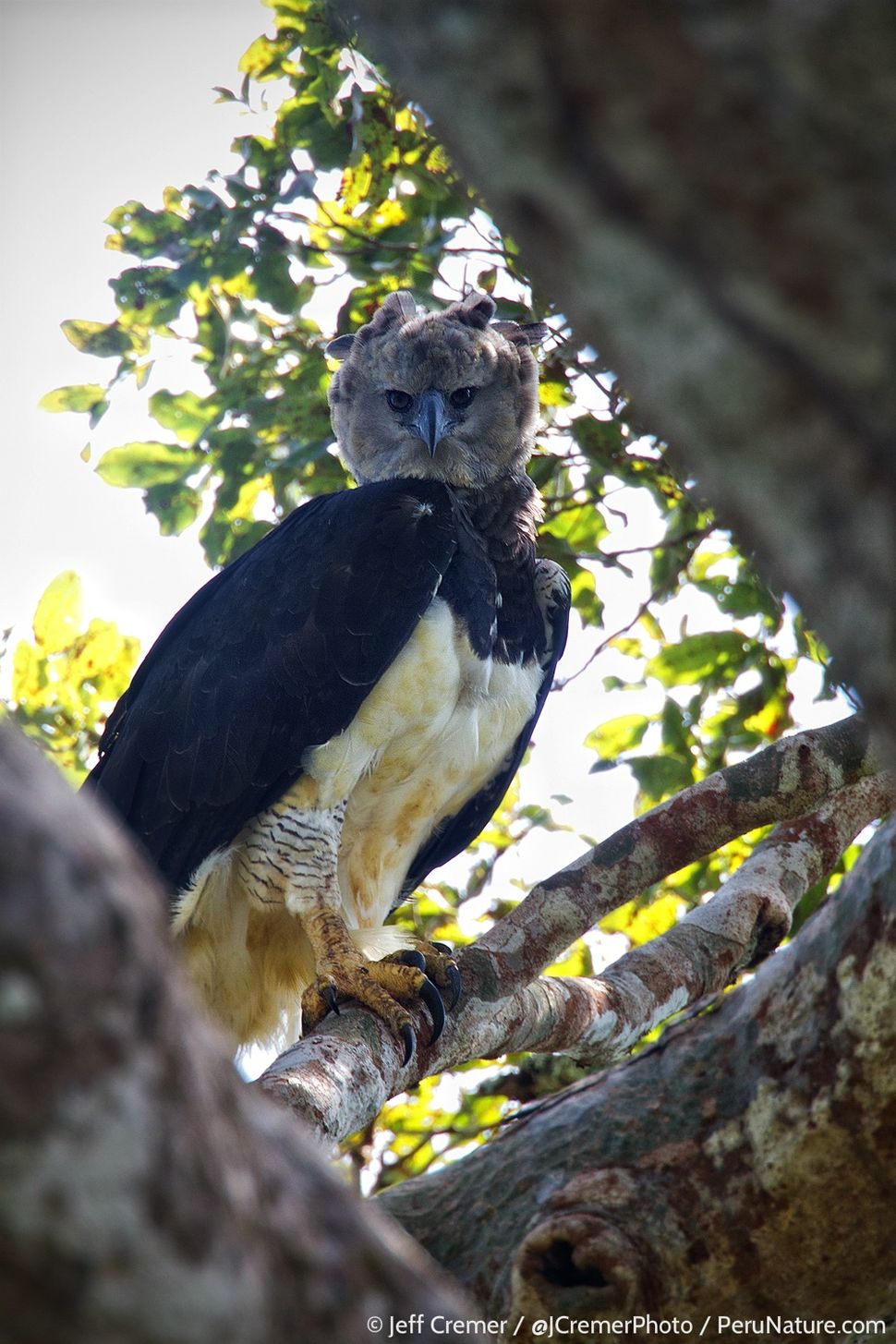General information
- Genus: Harpia
- Species: Harpyja
- Also known as: American Harpy Eagle, Harpy, Jungle Eagle
- Average length: 86.5 – 107 cm (34 – 42 in.), wingspan 1.8 – 2.2 m (6 – 7.2 ft.)
- Adult weight: Females: 7.6 – 9 kg (16.8 – 20 lb.), Males: 4 – 4.8 kg (9 – 10.6 lb.)
- Diet: Vary varied but mostly tree dwelling species, primarily sloths and monkeys but also porcupines, anteaters, parrots and macaws. Sometimes preys on agoutis, collared peccaries, snakes, lizards and fish.
- Natural predators: None (top of the food chain)
- Lifespan in the wild: Unknown
- Clutch size: Two eggs though one of them is normally ignored.
- Natural habitat: Large uninterrupted stretches of lowland tropical forest. Up to 900 m (3,000 ft.) and locally to 2,000 m. (6,500 ft.)
- Geographical range: Rare throughout extensive range, from southern Mexico to Bolivia, from Ecuador to Guyana and from south-eastern Brazil to north-eastern Argentina
Interesting Harpy Eagle facts
- It is such a powerful bird that it has been seen picking up animals such as sloths of over 6 kg (13 lb.).
- Their extremely powerful claws (“talons”) can be as large as a grizzly bear’s.
- Female Harpy Eagles are about twice the weight of males and accordingly hunt significantly larger prey.
- In the Tambopata National Reserve in the Peruvian Amazon rainforest, they are often seen harassing macaws and parrots at claylicks.
- The Harpy Eagle’s white, grey and black plumage takes about four years to completely form.
- The name “harpy” is thought to come from an ancient Greek mythological creature that had sharp claws, a woman’s face and a vulture’s body. The word means “that which snatches”.
- It is the national bird of Panama and presides over its coat of arms.
IUCN conservation assessment
- Estimated world population: Less than 50,000
- Conservation status: Near Threatened
- Population trend: Decreasing
Sources
- Schulenberg, T. S. 2009. Harpy Eagle (Harpia harpyja), Neotropical Birds Online (T. S. Schulenberg, Editor). Ithaca: Cornell Lab of Ornithology; retrieved from Neotropical Birds Online
- BirdLife International 2012. Harpia Harpyja. In: IUCN 2012. IUCN Red List of Threatened Species. Version 2012.2. Downloaded on 09 May 2013

Harpy Eagle in Tambopata

Baby Harpy Eagle Chick in Tambopata
